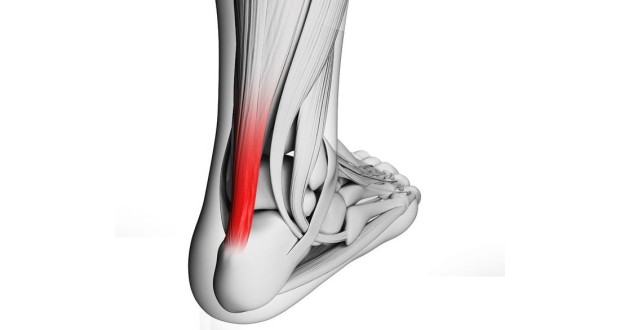If you’re over the age of 40, or happen to know a fair number of middle aged people, you’re likely well-acquainted with the term tendonitis. Like arthritis, another condition known for the chronic pain it inflicts upon older adults, tendonitis tends to prey on those with plenty of miles on their bodily odometer. With its ability to strike several areas of the body, tendonitis makes daily life an onerous chore for millions of Americans. Fortunately, tendonitis pain can be largely neutralized with the aid of certain exercises. By adopting the appropriate exercise regimen, tendonitis sufferers can eliminate much of the pain they feel on a regular basis.
Causes and Symptoms
You don’t need a medical doctorate to understand how tendonitis impacts the body. Though its name might sound somewhat complex, tendonitis simply refers to inflammation of the tendons that hold bones and muscles together. Given that there are bones and muscles throughout our entire body, tendonitis can strike virtually anywhere; patients frequently complain of tendonitis pain in their shoulders, elbows, knees, wrists and biceps.
The culprit behind tendonitis usually falls into one of two categories; overuse and trauma. The first reason for the appearance of tendonitis – overuse – is fairly self-explanatory. Simply put, if you place an excessively heavy burden on your tendons, they will repay the favor by becoming painful and inflamed. Tendons, like all other tissues within the body, need a constant supply of nutrients to stay healthy and pain-free. These vital nutrients are delivered via the bloodstream.
Unfortunately, thanks to an inherent design flaw in the makeup of the human body, some tendons are located in areas that are difficult for the bloodstream to access. Consequentially, these tendons are often starved for nutrients, and are especially prone to tendonitis pain. When tendons are overused, the body needs time to repair and restore damaged tendon tissue. In most cases, the body’s maintenance systems are able to accomplish this task relatively quickly, effectively stopping tendonitis pain before it starts. If the tendon damage is too great, however, the body’s internal repair mechanisms can become overwhelmed, and tendonitis develops.
Unlink tendon overuse, which gradually develops over a period of time, trauma-induced tendonitis develops quickly. As indicated by its name, this form of tendonitis appears after the body has sustained a significant injury. In addition to torn muscles, broken or fractured bones and unsightly gashes, some injuries also cause tendons in the afflicted area to suffer from inflammation. For some unlucky patients, this tendonitis can stick around even after the injury has healed. This unenviable condition is referred to as chronic tendonitis.
Physical Therapy for Tendonitis
To help rebuild weakened and damaged tendons, physical therapists often turn to various stretching and lifting exercises. Of course, the types of exercises employed depend on the body parts afflicted with tendonitis. To avoid aggravating the tendons, physical therapists often start out slowly when introducing a patient to these exercises. For example, if a particular exercise calls for lifting weights, the therapist might limit the patient to very light dumbbells. It is also worth noting that some patients are advised to start physical therapy only after their tendonitis begins to subside.
Physical therapists have developed a number of different exercises aimed at curbing tendonitis throughout the body. The list below illustrates the various techniques used to alleviate tendonitis pain in specific parts of the body. Before using these techniques, it’s best to consult with your primary care doctor or a physical therapist.
Wrist Curls/Reverse Wrist Curls – Though it might seem a bit surprising, performing both wrist curls and reverse wrist curls can help treat tendonitis in the elbow. Both of these exercises can be performed on flat surfaces; desks or weight benches are both good candidates. The back of your forearm should be planted firmly on your chosen flat surface, with the wrist hanging over the edge. For regular wrist curls, position your palm face up, with your dumbbell in hand. Curl your wrist back towards your body, and then curl it back to its starting position. To perform a reverse wrist curl, simply flip your wrists so that your palms are facing downward.
Quadriceps Stretch – This particular exercise is useful for treating the muscles located along the front of your thighs, known as the quadriceps. Position yourself about an arm’s length from a wall. While facing the wall, grab the ankle below the knee with tendonitis. In a slow and controlled manner, pull this leg up towards your buttocks until it can go no further. Hold this position for 15 to 30 seconds, before slowly returning to your starting stance. This exercise should be performed three a total times for each leg.
Bicep Curls – When one hears the term “bicep curls,” images of burly gym patrons pumping iron might come to mind. While there is no denying that bicep curls are a time-tested method of enlarging your bicep muscles, this exercise can also be used to reduce tendonitis pain. Of course, if you are using this technique to treat tendonitis, it would wise to use lighter free weights. Additionally, using smaller dumbbells should allow you to perform a relatively high amount of repetitions (10 reps per set should fit the bill nicely).
Bicep curls are a fairly straightforward exercise. While standing up, hold a dumbbell in your hand with the palm facing outward. When starting the exercise, your hand should be at your waist. Slowly curl your hand upward until it can go no further, and then carefully return to your starting point. Be careful to avoid swinging your arms for added momentum, and refrain from using your back muscles to help you lift. Both of these common mistakes with dilute the effectiveness of your bicep curls.
Pendulum Swings – Patients with tendonitis in the shoulder often rely on this exercise to reduce their pain. This exercise is usually performed with the aid of a chair, or another object of similar height. Lean forward and grab the edge of the chair with your uninjured arm, while allowing the tendonitis-stricken arm to swing freely. Using the momentum from this position, try to move your arm back and forth. Eventually, you should try to replace the back-and-forth movements with circular motions. These circles should start out small, at roughly the size of a dinner plate. As the tendonitis pain begins to fade, you should be able to make bigger and bigger circles with your swings. Please note that pendulum swings should not be performed using your arm muscles. Rather, the positioning of your legs and hips should allow the afflicted arm to move freely.
 Natural Knowledge 24/7 Educate yourself with nutrition, health and fitness knowledge.
Natural Knowledge 24/7 Educate yourself with nutrition, health and fitness knowledge.






